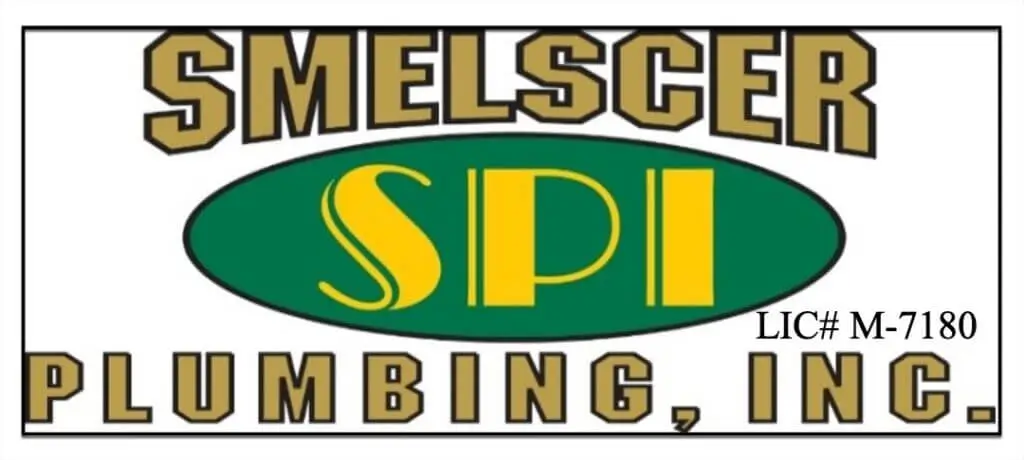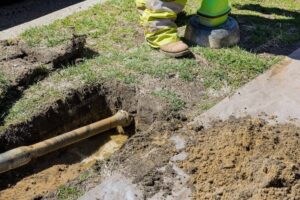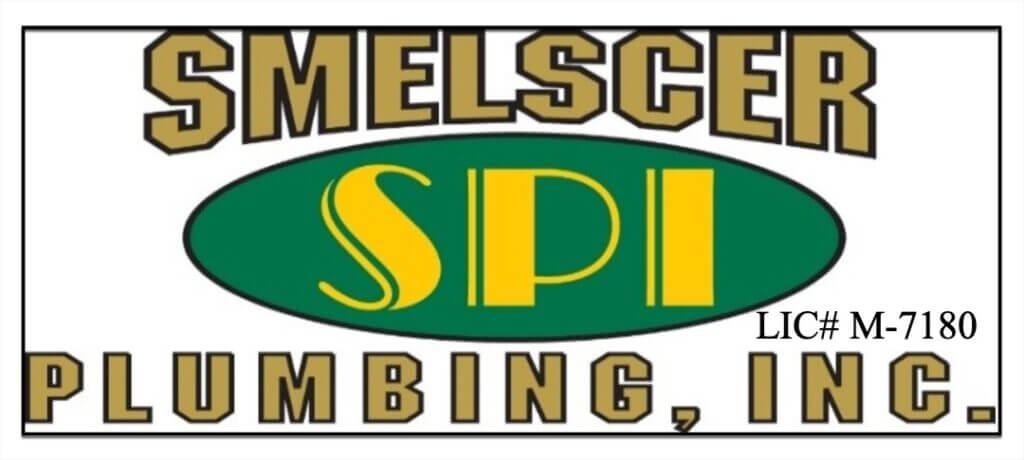Navigating the complexities of slab leak repair in commercial properties requires a meticulous and adaptive approach. From early detection and specialized repair methods to regulatory compliance, project management, and sustainability considerations, every facet demands careful attention.
The significance of addressing slab leaks in commercial properties lies not only in maintaining the structural integrity of the building but also in safeguarding business operations. Commercial spaces present a unique set of challenges that demand a comprehensive and nuanced approach to repair. This discussion aims to delve into the intricacies of slab leak repair in commercial and industrial settings, exploring the multifaceted challenges and offering detailed solutions.
Table of Contents
ToggleChallenges in Slab Leak Repair for Commercial Properties
A. Complex and Large-Scale Infrastructure
The plumbing infrastructures in commercial properties are extensive and intricate, often spanning multiple floors and sections. Identifying and repairing slab leaks in such a complex system requires a thorough understanding of the entire network and specialized approaches for large-scale infrastructures.
B. High Potential for Water Damage and Business Disruption
Beyond the immediate structural concerns, the potential for water damage in commercial properties poses a substantial risk. In addition to the financial implications, any disruption to business operations can result in significant downtime and compromise the overall customer experience.
C. Regulatory Compliance and Safety Requirements
Commercial buildings are subject to stringent regulations and safety standards. Adhering to these standards during repairs is not only a legal obligation but also essential for ensuring the safety of occupants and the longevity of the repair work.
D. Occupancy and Business Continuity Concerns
Unlike residential spaces, commercial properties are often occupied by numerous tenants conducting diverse business operations. Balancing the repair needs with the imperative for continuous business operations becomes a delicate yet crucial aspect of the repair process.
E. Accessibility and Space Limitations
Navigating through limited spaces and ensuring accessibility to critical areas, especially in multistory commercial buildings, poses challenges that demand innovative and strategic solutions. The spatial constraints require a tailored approach to ensure effective repairs without causing unnecessary disruptions.
F. Differences Between Commercial and Residential Plumbing Systems
Understanding and addressing the distinctions between residential and commercial plumbing systems is paramount. The plumbing infrastructure in commercial properties is designed to handle higher volumes, different pressure requirements, and varying usage patterns, necessitating a specialized approach to slab leak repair.
Detection and Diagnosis
A. Importance of Early Detection in Commercial Settings
Early detection of slab leaks in commercial settings is critical to prevent extensive damage. Regular inspections and proactive monitoring are essential components of a comprehensive maintenance strategy to identify potential issues before they escalate.
B. Specialized Leak Detection Equipment for Large Spaces
Traditional leak detection methods may fall short in the vast spaces of commercial buildings. Employing specialized leak detection equipment, such as acoustic sensors and thermal imaging devices, becomes imperative for accurate diagnosis in expansive areas.
C. Coordination with Property Managers and Business Owners
Effective communication and collaboration with property managers and business owners are pivotal. Their insights into the daily operations and potential disruptions allow for a more accurate diagnosis and efficient planning for repairs.
Impact on Business Operations
A. Potential Disruption to Daily Operations and Customer Experience
The potential disruption to daily operations in commercial properties is a significant concern, considering the diverse range of businesses operating within. Minimizing this impact requires a strategic approach that accounts for the specific needs and operational requirements of each tenant.
B. Strategies to Minimize Downtime During Repairs
Implementing strategies to reduce downtime is crucial. Phased repairs, temporary relocations, and transparent communication with stakeholders are strategies employed to ensure minimal disruption while addressing the repair needs effectively.
C. Communication and Coordination with Tenants and Employees
Transparent and proactive communication with tenants and employees is fundamental. It fosters understanding, cooperation, and a sense of shared responsibility during the repair process. Regular updates and clear communication channels contribute to a smoother repair experience.
Repair Methods and Technologies
A. Trenchless Repair Options for Minimal Disruption
In commercial properties, where business operations are paramount, trenchless repair options gain prominence. Methods such as pipe bursting or pipe lining minimize disruptions by avoiding extensive excavation, preserving the integrity of the building and ensuring a quicker return to normal operations.
B. Traditional Repair Methods, Their Suitability, and Challenges
Evaluating traditional repair methods involves a thorough understanding of their suitability for the commercial environment. While traditional methods like open excavation may be necessary in certain scenarios, their challenges, such as extended downtime and structural impact, need to be carefully considered.
C. Case-Specific Considerations for Choosing the Right Repair Method
Each slab leak repair case in commercial properties is unique. Factors such as the location of the leak, the type of business operations affected, and the overall impact on the building’s structure influence the choice of repair method. A tailored approach ensures optimal outcomes.
D. Advanced Technologies, Such as Pipe Lining and Epoxy Coatings
Embracing advanced technologies like cured-in-place pipe (CIPP) lining and epoxy coatings provides durable solutions with minimal disruption. These technologies offer not only effective repair but also contribute to the long-term sustainability of the plumbing infrastructure.
Regulatory Compliance
A. Importance of Adhering to Building Codes and Regulations
Ensuring strict adherence to building codes and regulations is crucial for legal and safety reasons. Compliance with these standards, which may vary for commercial properties, is fundamental to the success and legality of the repair work.
B. Permitting and Inspection Requirements
Navigating through permitting processes and meeting inspection requirements involves meticulous attention to detail. Obtaining the necessary permits and passing inspections are integral steps in ensuring that the repair work aligns with regulatory standards.
C. Health and Safety Standards for Workers and Occupants
Adhering to stringent health and safety standards is non-negotiable. Protecting the well-being of workers or plumbers and building occupants is a priority, and the repair process must incorporate measures to mitigate risks and ensure a safe working environment.

Project Management and Coordination
A. Project Planning and Scheduling for Commercial Spaces
Thorough project planning and scheduling are crucial in commercial spaces where time is of the essence. A comprehensive understanding of the project scope, detailed timelines, and contingency plans are essential to ensure that repairs are executed efficiently and within the projected timeframe.
B. Coordination with Multiple Stakeholders
The complexity of commercial properties necessitates coordination with multiple stakeholders, including property owners, tenants, contractors, and possibly regulatory bodies. Effective communication channels and regular updates are vital for ensuring everyone is aligned with the project goals and timelines.
C. Project Management Tools and Software for Efficient Communication
Utilizing project management tools and software enhances communication and coordination. Real-time updates, collaborative platforms, and streamlined workflows contribute to the efficiency of the repair process. These tools facilitate seamless communication among stakeholders, aiding in quick decision-making and issue resolution.
Cost Considerations
A. Budgeting for Slab Leak Repair in Commercial Properties
Accurate budgeting is critical for the complex nature of repairs in commercial properties. Anticipating costs related to specialized equipment, skilled labor, potential business disruptions, and unforeseen challenges ensures financial preparedness. A detailed budget allows for effective cost control throughout the repair project.
B. Long-Term Cost Savings from Preventing Water Damage and Business Interruptions
While the upfront costs of slab leak repair in commercial properties may seem substantial, they pale in comparison to the potential long-term cost savings. Preventing extensive water damage and minimizing business interruptions not only protects the investment in the property but also ensures ongoing revenue streams for tenants.
Environmental and Sustainability Aspects
A. Environmentally Friendly Materials and Reir Techniques
Considering environmentally friendly materials and repair techniques aligns with the growing emphasis on sustainability in the construction industry. Opting for materials with minimal environmental impact and employing repair methods that promote eco-friendliness contribute to the overall environmental responsibility of the repair project.
B. Minimizing Water Waste During Repair and Testing
Implementing measures to minimize water waste during repairs and testing is crucial for sustainable practices. This involves incorporating efficient water recycling systems, adopting leak detection methods that minimize water usage, and monitoring water consumption throughout the repair process.
C. Impact on Sustainable Building Certifications (e.g., LEED)
For commercial properties aiming for sustainable building certifications such as LEED (Leadership in Energy and Environmental Design), the repair process plays a crucial role. Ensuring that repair methods and materials align with sustainability criteria contributes to maintaining or achieving these certifications, further enhancing the property’s market value.
Future Trends in Commercial Slab Leak Repair
A. Emerging Technologies and Trends, Such as Predictive Maintenance and IoT Integration
Looking ahead, the incorporation of emerging technologies becomes a focal point. Predictive maintenance, enabled by IoT (Internet of Things) integration, allows for proactive monitoring, reducing the likelihood of future slab leaks and optimizing maintenance schedules for commercial properties.
B. Innovations in Leak Detection and Repair Methods
The future of slab leak repair in commercial properties holds promising innovations in leak detection and repair methods. Continued advancements in materials, technologies, and methodologies will likely provide even more efficient and sustainable solutions for addressing slab leaks in the evolving landscape of commercial real estate.
Conclusion
As the industry continues to evolve, embracing emerging technologies and staying attuned to future trends will be key in ensuring that commercial properties not only withstand the challenges of today but also remain resilient in the face of tomorrow’s uncertainties. The holistic understanding and strategic implementation of slab leak repair methodologies outlined herein aim to guide property owners, managers, and stakeholders toward effective and sustainable solutions in the dynamic realm of commercial real estate. For more information about slab leak repair, contact us today.




